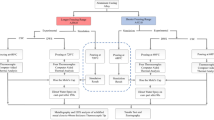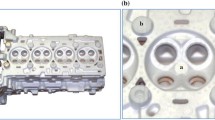Abstract
Using separately cast test bars is a quick and convenient method of determining as-cast metal quality in the foundry—although such results are only representative of the section of a casting solidifying at the same rate as the test bar. Unfortunately the current standard test bar mold suffers from shrinkage porosity which detracts from best properties. In this work computer simulation has been utilized to predict and design an improved permanent mold test bar mold. A356 alloy has been melted and treated with best metal cleaning practices (degassing, filtration) in order to assess the effect of clean metal as a baseline (Phase 1) of this research prior to microstructural enhancements (modification, grain refinement, SDAS) which is Phase 2 of this research.
The results show that with a knife ingate in the re-designed test-bar mold, better tensile properties with A356 separately cast test bars heat treated to T6 can be obtained on a more consistent basis throughout a varying mold temperature range. With best in-furnace clean metal practice and virgin ingot, applying filters in the test bar mold have minimal effect, but show that filtration is beneficial if melting recycled metal.
Even without the additional microstructural enhancements, preliminary results in the standard heat treated T6 condition show that the new test bar mold delivers a high quality result as measured by the Quality Index method.
Similar content being viewed by others
References
Sigworth, G.K., Kuhn, T.A, “Use of ‘Standard’ Molds to Evaluate Metal Quality and Alloy Properties,” AFS Transactions, vol. 117, pp. 55–62 (2009).
Emadi, D., Whiting, L.V., Sahoo, M., Larouch, D., “Revisiting the ASTM B108 Test Bar Mold for Quality Control of Permanent Mold Cast Aluminum Alloys,” AFS Transactions, vol. 112, pp. 225–236 (2004).
Dunlap, W.J., Baldwin, S.V., Le, G., Porterfield, T.R., Druschitz, A.P., Griffin, J.A., “Effects of Heat Treatment, Degassing and Chemistry on the Mechanical Properties of A356 Aluminum Alloy, Green Sand Castings,” Proceedings of the 114th AFS Metalcasting Congress (2010).
Sigworth, G.K., Caceres, C.H. “Quality Issues in Aluminum Net-Shape Castings,” AFS Transactions, vol. 112, pp. 373–386 (2004).
Carlson, K.D., Beckermann, C., “Prediction of Shrinkage Pore Volume Fraction Using a Dimensionless Niyama Criterion,” Metallurgical and Materials Transactions A, vol. 40A, pp. 163–175 (2009).
Niyama, E., Uchida, T., Morikawa, M., Saito, S., “A Method of Shrinkage Prediction and Its Application to Steel Casting Practice,” International Cast Metals Journal, vol. 7, issue 3, pp. 52–63 (1982).
Campbell, J., “Ten Rules for Good Casting,” Modern Castings, vol. 87, issue 4, pp. 36–39 (1997).
Sigworth, G.K., “Quality Issues in Aluminum Castings,” International Cast Metals Journal, vol. 4, issue 4 (September 2010).
Dean, A., Voss, D., “Design and Analysis of Experiments,” pp. 145, Springer, New York, NY (1999)
Author information
Authors and Affiliations
Rights and permissions
About this article
Cite this article
Wang, Y., Neff, D., Schwam, D. et al. Optimization of Permanent Mold Mechanical Property Test Bars in A356 Alloy Using a New Mold Design. Inter Metalcast 7, 25–38 (2013). https://doi.org/10.1007/BF03355556
Published:
Issue Date:
DOI: https://doi.org/10.1007/BF03355556




